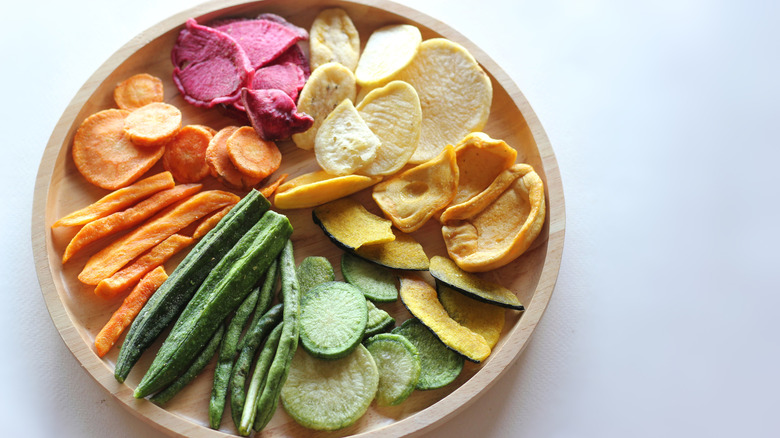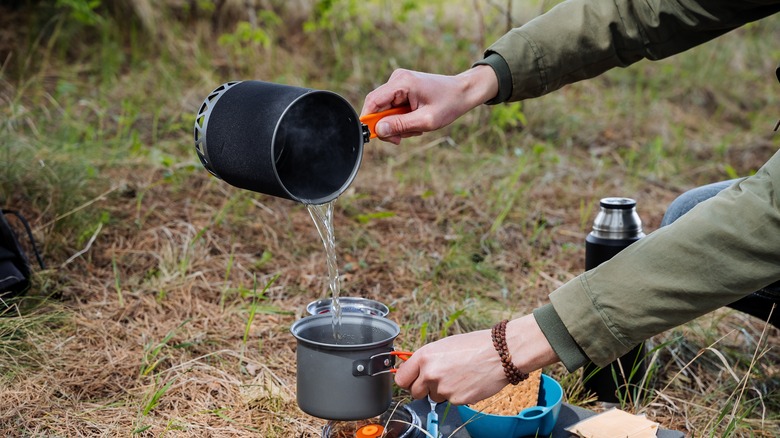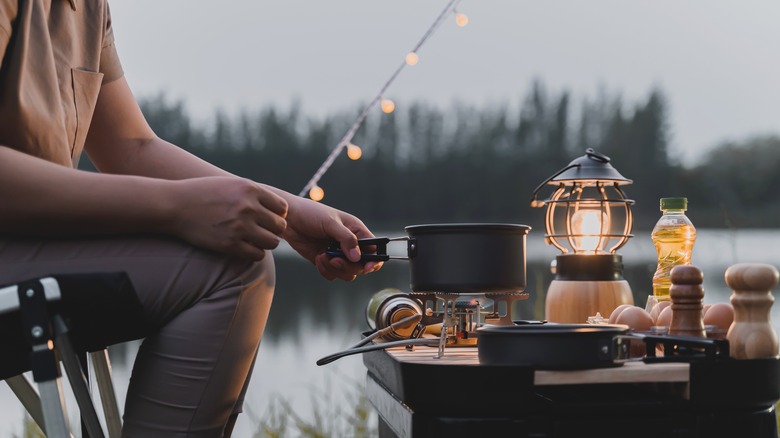The Surefire Ways To Rehydrate Pretty Much Any Dried Food
Many outdoorsy folks already know the benefits of packing dehydrated foods in their knapsacks when hiking, along with other camp food hacks you should master, like creating your own coffee bags and creatively storing your spices. Dehydrating extends the shelf life of food items without added preservatives, plus it helps retain much of its nutrition water is the only thing lost. However, the biggest draw of bringing dehydrated food is that it is much lighter and more compact than its non-dehydrated counterparts. Because of this lighter load, you can bring more of these essential foods for camping, which helps stave off the monotony of having the same meal repeatedly while on the trail.
The only thing you'll need to bring your dehydrated food back to life is, of course, water. It's good hiking sense to include at least one stop a day at a water source to top off your water bottles. This water stop is also a prime time to collect water so you can rehydrate your prepared meal. There are a few different methods to rehydrate your food, and which method you choose can depend on your activities for the day. The three methods of rehydrating dehydrated food are cold soaking, simmering, or boiling.
Different methods of rehydrating on the trail
Cold soaking requires the least effort of all three methods: pour enough water into a container with the dehydrated items and let it sit. You can do just that for breakfast with these different overnight oats recipes. Or if you're making camp, you could set your meal to soak in the morning, leaving the container in a safe spot while you go about your activities. When you return, the food will be well-hydrated for you to enjoy.
Simmering dehydrated food in water will yield the best flavor if you're more of a gourmand on the trail. This also works best if you have separate dry ingredients. Some folks like to have a mix-and-match setup for their meals with different seasonings, vegetables, proteins, and starch. Simmering allows the flavors to harmoniously meld together when you combine different ingredients. The downside is that the longer cooking time will use up more fuel.
The quickest method to serve warm food on the trail is to boil the dehydrated food in water. The quickest way to serve warm food on the trail is to boil the dehydrated food with water. Combine the ingredients and boil them for 5-10 minutes. Turn off the flame to let the ingredients soak for another 5-10 minutes before mixing it all and digging in. This uses less fuel than the simmering method and still gives you a hot meal at the end of a long hike.
More tips for dehydrated food
Plenty of dehydrated food items are available on the market, from individual ingredients like onions and beef jerky to full meals like risotto. But what if you wanted to dehydrate food yourself? But what if you wanted to dehydrate food yourself? You could either dehydrate individual ingredients or dehydrate full meals. Chunky soup and stews dehydrate well as full meals, while noodle soups and rice dishes fare better as separate ingredients combined later. While a specialized dehydrator is best, you can also use this oven hack to dehydrate foods.
Always remember to fully cook everything, whether individual ingredients or full meals, before dehydrating them, especially meats and vegetables. This will reduce cooking time on the trail, as uncooked food still needs to be cooked after rehydration. Items that contain a lot of fat or oil will not dehydrate as well, like dairy products and fatty cuts of meat. They are also prone to spoiling faster. For the best-dehydrated options, stick to lean meats, non-leafy vegetables, and sturdy starches like grains and pasta.


